Solar eclipse 2015: What you need for a party on Friday
- Published
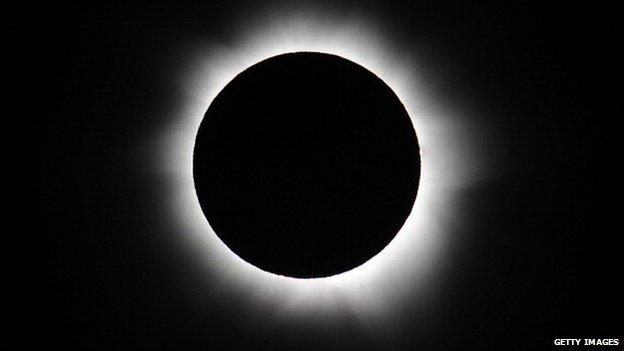
This month's eclipse will only be a partial eclipse, unlike this total one.
This Friday we'll witness a solar eclipse, an event people once thought heralded the end of the world.
Fortunately the apocalypse is not yet upon us.
A solar eclipse is when the moon moves directly between the sun and the earth. It's unusual because the earth, sun and the moon all have to align.
It is also rare because the shadow the moon casts on the earth is small and only affects certain places on earth.

We haven't had a full solar eclipse since 1999 and the one happening this March is only a partial eclipse.
If you miss this one, it will be 2026 before you can catch the next partial eclipse.
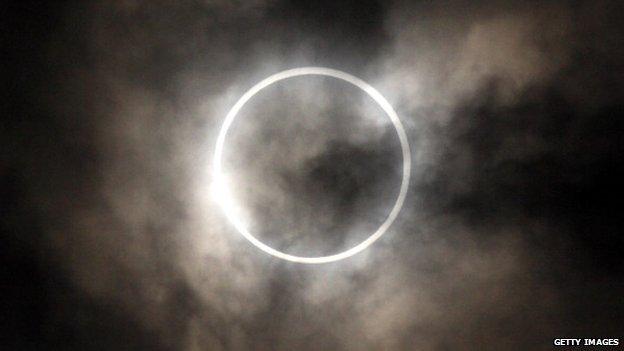
A solar eclipse in Tokyo, Japan, happened in May 2012
It will be 2090 until the next total solar eclipse is seen in the UK.
As it's such an unusual occurrence, it's probably worth having a party.
Time: 8.45
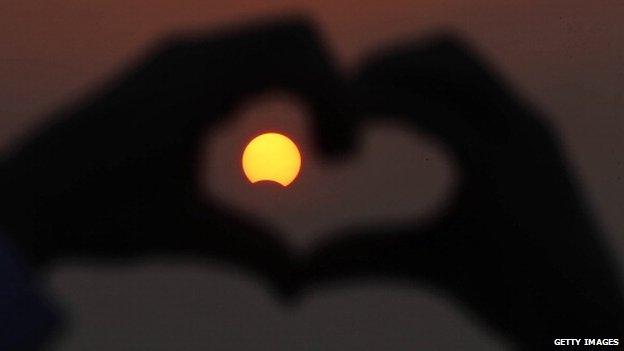
It's going to be a breakfast affair as the eclipse begins in the UK at 8.45am.
The maximum eclipse, when the moon is nearest the middle of the sun, will be at 9.31am.
It will all wind down at 10.41am.
Place: A boat off the Faroe Islands OR anywhere with a clear view of the horizon

The best place to see the eclipse is on the Faroe Islands, north of Scotland
The further north you go, the greater the shadow over the earth and the fuller the eclipse.
Up to 94% of the Sun's light will be blocked by the moon in Scotland.
In places further south like London, the sun will probably only be 85% obscured by the moon.
According to Dr Edward Bloomer, an astronomer with the Royal Observatory in Greenwich, the Faroe Islands is the best place to see it.
But if you can't make it that far north, you'll still get a "very good view indeed" in the UK.
All you need is a "nice clear horizon and view of the sky".
It's about not having tall buildings or trees blocking the view.
Bring your own...
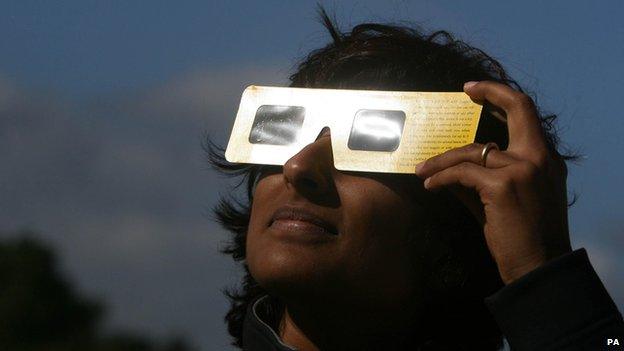
People watch the eclipse of the Sun with filter glasses in London in 2009
Eclipse glasses: Looking at the sun directly damages your eyes.
These special specs are specially made to filter out harmful radiation and ultra violet light so you can gaze at the star without hurting your vision.
They are relatively cheap and you can buy them online.
Alternatively Dr Bloomer says you can make your own eclipse viewer at home with a "pinhole projection".
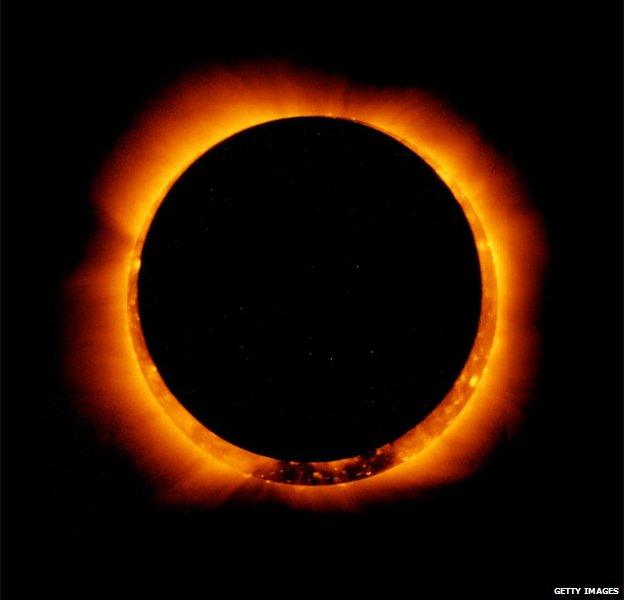
May 2012: Sun spots are seen as the Moon moves into a full eclipse position
He told Newsbeat: "Get yourself a piece of card and cut a hole in it.
"Cover that with a piece of tinfoil, pierce a very small hole in it.
"If you point that towards the sun and project the light coming through the pinhole onto a piece of white cardboard or paper then you can view the sun and view the Sun's projection there, so you aren't looking directly at the sun."
Is it just a blocked-out sun? What's the big deal?
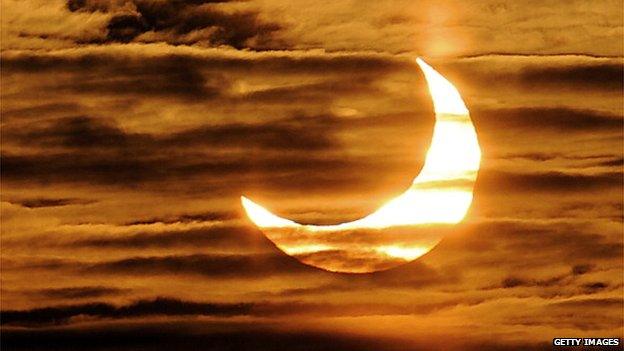
It's not just the fact that you get to see the "celestial mechanics at work" which makes eclipses interesting, according to Dr Bloomer.
You can see the atmosphere of the sun, called the corona (yup, like the beer) during a total eclipse. Usually you would need special equipment to do that.
This corona is super-hot, 100 times hotter than the already impressive 5,538C temperature of the sun itself.
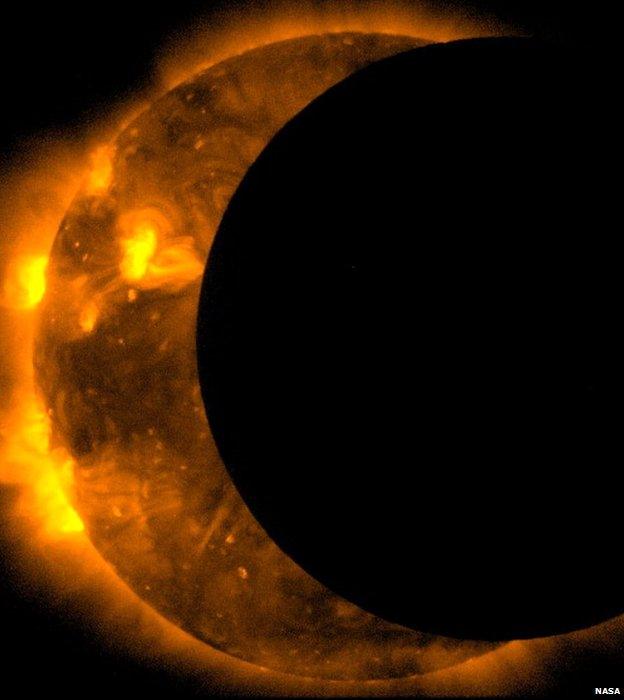
Sun spots can be seen as the Moon moves into a partial eclipse position after reaching annularity during the first annular eclipse seen in the U.S. since 1994 on May 20, 2012. An annular eclipse is when the Moon covers the Sun's centre, leaving the Sun's outer edges to form a "ring of fire."
Eclipses reveal aspects of the corona, such as streamers, (long bright pointy bits packed full of electrons) plumes (thin streaks from the sun's north and south pole), and loops (shimmering active magnetic fields, often found above darker sun spots.)
Conversation starters
If you're staring at the sky but feeling underwhelmed, indulge your fellow party-goers with some of these eclipse-related facts to get the party started.
1. Academics have tried to uncover the exact date for the crucifixion of Christ using astronomical calculations.
They take as their starting point the theory that the darkness that clouded the sky on Good Friday, when Jesus was on the cross, was actually a partial eclipse.

2. Those glasses are important.
You don't want to end up like 19th century psychologist Gustav Fechner, who partially blinded himself while doing experiments which involved staring at the sun through a coloured lens.
You should never look at the sun through a telescope or pair of binoculars, it will permanently damage your eyesight.
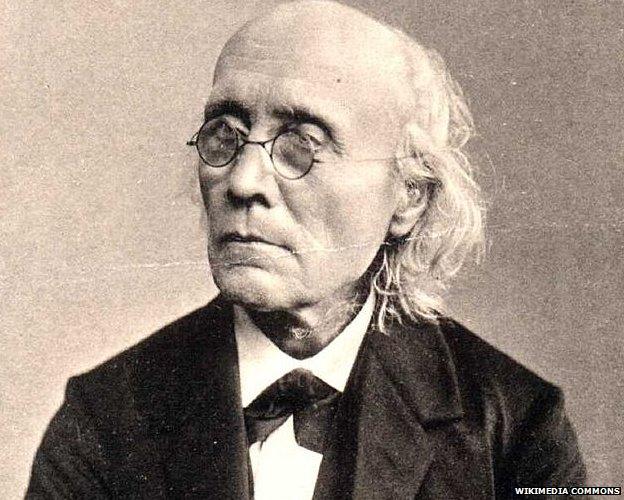
3. In Romanian folklore Vârcolacs are wolf-demons that eat the moon and the sun during eclipses. They are often classed as vampire-hybrids.
Greek mythology borrows this notion for their 'vrykolakas'. However, these undead creatures drink blood and swell up like drums.
Korean folklore also links dogs with eclipses, saying that solar eclipses occur because mythical dogs are trying to steal the sun.

3. Muslims conduct special prayers during the eclipse. In them they thank Allah for his control over the sun and the moon.
4. There's a recurring myth that pregnant women can't go outside during an eclipse. Astronomers from the Griffith Observatory in LA say they get dozens of calls about it when an eclipse happens, even though it seems irrational. But if one of your friends is pregnant, don't worry, you can invite them along to your party. This myth has no basis in fact.
5. The word eclipse comes from the Ancient Greek word ékleipsis, which means abandonment.
6. The speed of the Moon as it moves across the Sun is approximately 2,250 km (1,398 miles) per hour.
Happy viewing!
Follow @BBCNewsbeat, external on Twitter, BBCNewsbeat, external on Instagram and Radio1Newsbeat, external on YouTube